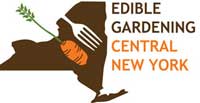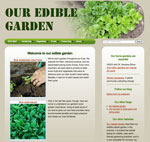Learn about the birds
in your backyard
Thurs. Aug. 16
11:00 am - noon |
 | |
Black-capped chickadee
|
| |
Frank Moses of the Montezuma Audubon Center will introduce us to our feathered friends living in our backyard and by Onondaga Lake.
FREE! Appropriate for all ages over 3 years.
Solvay Public Library
615 Woods Rd. Solvay
315.468.2441
|
| Skaneateles Lake Watershed Events |  |
iMapInvasive Workshop RESCHEDULED! Oct. 18, 7:00 pm - 8:30 pm Baldwinsville Public Library 33 E. Genesee St. Baldwinsville
Asian Clam and Hydrilla Identification, Prevention, and Monitoring Workshop Aug. 22, 6:00 pm - 7:30 pm Skaneateles YMCA 97 State St.., Skaneateles
Forest Management and Invasive Insect Workshop Aug. 28, 5:00 pm - 6:30 pm The Creamery 28 Hannum St. Skaneateles
Septic and Well Water Workshop Sept. 12, 5:30 - 7:00 pm United Methodist Church 26 Jordan St., Skaneateles
Funding for these events is provided by the City of Syracuse Dept. of Water
For details and to register visit www.extendonondaga.org or contact Sherry Martin at 315.424.9485 ext. 232, sm674@cornell.edu |
| Our Habitat Garden |  |
Visit Our Habitat Garden website for information on providing habitat, earth-friendly gardening practices, plants, and various creatures here in Central New York.
|
|
Join HGCNY!
|  |
Becoming an official member of HGCNY is easy: just join Wild Ones! When you're a Wild Ones member, you're automatically an official member of HGCNY. |
| HGCNY on Facebook |
As as more of us participate on our Facebook page, this will become a useful resource for asking (and answering!) local HGCNYers' questions about habitat gardening. |
| Interested in Edible Gardening? | 
|
If you'd like to get information on Edible Gardening CNY, just email John to find out about edible gardening tours and monthly programs. Free and open to the public! |
|
Our Edible Garden: updated with GROUNDHOG info!
|  | Visit OurEdibleGarden.org to see an example of a Central New York edible garden, the perfect companion to your habitat garden.
Here's our experiences with groundhogs, and here's our solution to the groundhog problem!
|
|
Greetings!
 | | Tour a habitat garden |
Show Me, Help Me Tours
We're down to our last tour!
Sun. Aug. 19 at 2:00 pm: We'll tour Linda Rossiter's wooded property in a residential area in Fulton. It's just under a half-acre and borders a Class II wetland with stream. The gardens--including some deep shade and part-shade gardens--are being transitioned towards all native plants. Bring binoculars to view the marsh, and bring boots if you'd like to go into the marsh. Joe-pye weed, boneset, goldenrod should all be in full bloom! Linda would like help with plant ID and suggestions for new plants to add. RSVP to Linda for directions.
Programs start in September
Be watching for news of our 2012 - 2013 program year. Our meetings are the last Sunday of each month at 2:00 pm at Liverpool Library. Mark your calendars for a year of terrific programs! They're free and open to the public.
~ Janet Allen
|
|
 | Crimsoneyed rosemallow (Hibiscus moscheutos),
a native hibiscus |
Our annual plant sale Sept. 8-9
We'll hold our annual plant sale on Saturday, September 8th, 10 am to noon at 401 Parsons Drive (directions). Plants not sold on Saturday will be available Sunday, September 9 from 1 pm to 3 pm.
People donating plants (native plants only, please!!) or helping with the sale should be here at 9 am and will be able to choose plants from 9 to 10.
If you want to donate plants but can't bring them on Sept. 8, let John know, and you can bring them earlier.
In addition to plants donated by members, we'll will have plants from some of our plant guide vendors.
PRE-ORDER trees and shrubs!!
White Oak Nursery will deliver trees and shrubs to be picked up at the sale, but you have to order them ahead of time.
Here is the procedure:
Go to White Oak Nursery and click on Potted Seedlings to see what is available.
Prices:
$10 for plants listed for $6
$11 for plants listed for $7.
The additional charge covers the cost of the pots and delivery and leaves some for funding HGCNY activities.
Larger plants (add $6 to the price listed) can also be ordered from the Trees and Shrubs section of the website but Jim Engel, owner of White Oak Nursery, suggests that you contact him (or phone 315.789.3509) to be sure they're available.
Once you have selected what you want to order, email or call (315.487.5742) John.
We will need your order no later than Sunday, Sept. 2. If you can't pick them up on Sept. 8 or Sept. 9, we can make other arrangements. |
 | | Blueberries - a beautiful alternative to burning bush |
NY State compiling lists of noxious weeds
Carol Bradford, popular presenter at HGCNY meetings and newspaper garden advice columnist, had a great article about non-native invasive plants last Saturday (Aug. 11) in the Post-Standard.
She noted that unlike many other states, New York has never had a noxious weed list. But that's about to change. Finally!
A list of species to be regulated will be developed and put into effect Sept. 2013.
To be defined as invasive, a plant 1) must not be native to the ecosystem and 2) must be capable of harming the environment, the economy, or human health. Some horticultural plants that may be included are: Norway maple, burning bush, Japanese barberry, goutweed (aka bishop's weed), and Japanese honeysuckle among others. Fortunately, many beautiful native plants can fill take their place in our landscapes! Read the whole article.
|
 | |
Photo: DEC website
|
Beware of this non-native plant!
Many non-native plants are disaster for nature, outcompeting native plants and providing little food for insects, the foundation of the food web.
But here's a plant not only bad for nature, but also disastrous for people: giant hogweed (Heracleum mantegazzianum), a federally listed noxious weed. It was introduced to the US in the late nineteenth century as an ornamental and is spreading through the Northeast.
Danger!
According to the NYS Dept. of Environmental Conservation (DEC):
Its sap, in combination with moisture and sunlight, can cause severe skin and eye irritation, painful blistering, permanent scarring and blindness.
Contact between the skin and the sap of this plant occurs either through brushing against the bristles on the stem or breaking the stem or leaves.
The mature plant is very tall (up to 14 feet) and its umbrella-shaped flower heads are very large (up to 2-1/2 feet in diameter).
Giant hogweed is often confused with the similar-looking cow parsnip, angelica, poison hemlock, or wild parsnip. The DEC has ID tips.
If you think you may have found giant hogweed on your property, or on public land, email the DEC at ghogweed@gw.dec.state.ny.us or call the Giant Hogweed Hotline at 1.845.256.3111. Provide photos, detailed directions to the plant infestation and estimate the number of plants.
Read more about this non-native plant on the DEC website and on the North Country Public Radio website.
|
 | | Pagoda dogwood aka alternate-leaf dogwood (Cornus alternifolia) |
Tree vignettes from SUNY-ESF
Don Leopold and Christopher Baycura of SUNY-ESF recently added another 35 tree vignettes to YouTube for a total of 135 trees!
Each 2-minute video briefly summarizes how to identify each tree, its ecological characteristics, importance, and whatever else came to mind. They've covered most of the trees that one would encounter in the woods or in landscapes in upstate NY and throughout the Northeast, and all the trees covered in Leopold's dendrology course that are cold hardy in CNY (many western US tree species). View the vignettes on YouTube. They're also all available for free on iTunes U. (Search iTunes U for "Donald Leopold" to find them.) A wonderful resource and very enjoyable to watch!
|
|
Share a photo of your Monarch Waystation
 | | Monarch Waystation sign |
If you have milkweeds, nectar plants, and refrain from using pesticides, you're helping monarch butterflies survive, and you may even have an official Monarch Waystation.
If you've met the Monarch Watch requirements for providing for the monarch's needs, you can become certified and are eligible to purchase a sign. (Note: Monarch Watch includes non-natives on their plant list, but we suggest natives instead!)
If you have a certified Waystation, send a digital photo, and we'll create a page on our HGCNY website showing the Monarch Waystations in CNY.
Please include your Waystation number and how you would like to be identified (e.g. "Syracuse," "Sam from Syracuse," "Sam Smith at 100 Main St., Syracuse," etc.--whatever level of specificity you're comfortable with).
You're also welcome to include a brief paragraph indicating what kind of milkweed and other native nectar plants are in your Waystation and any other information of interest.
Our first Waystation The Women's Garden Club of Baldwinsville submitted our first Monarch Waystation, Yevich Trail! |
|
Our Native Plant Shopping Guide tells you where to find native plants
 | |
(Click image to download)
|
To help you find native plants in CNY, we've compiled a list of plants offered by several local nurseries. REMEMBER, nurseries can sell out of any particular plant, so it's a good idea to call before setting out on your shopping trip! DOWNLOAD: This guide is available online as a free .pdf download. |
|
|
|
|